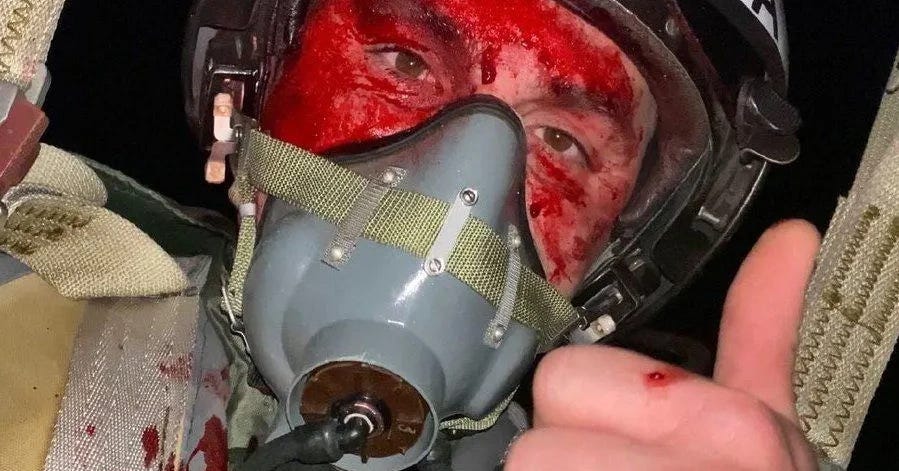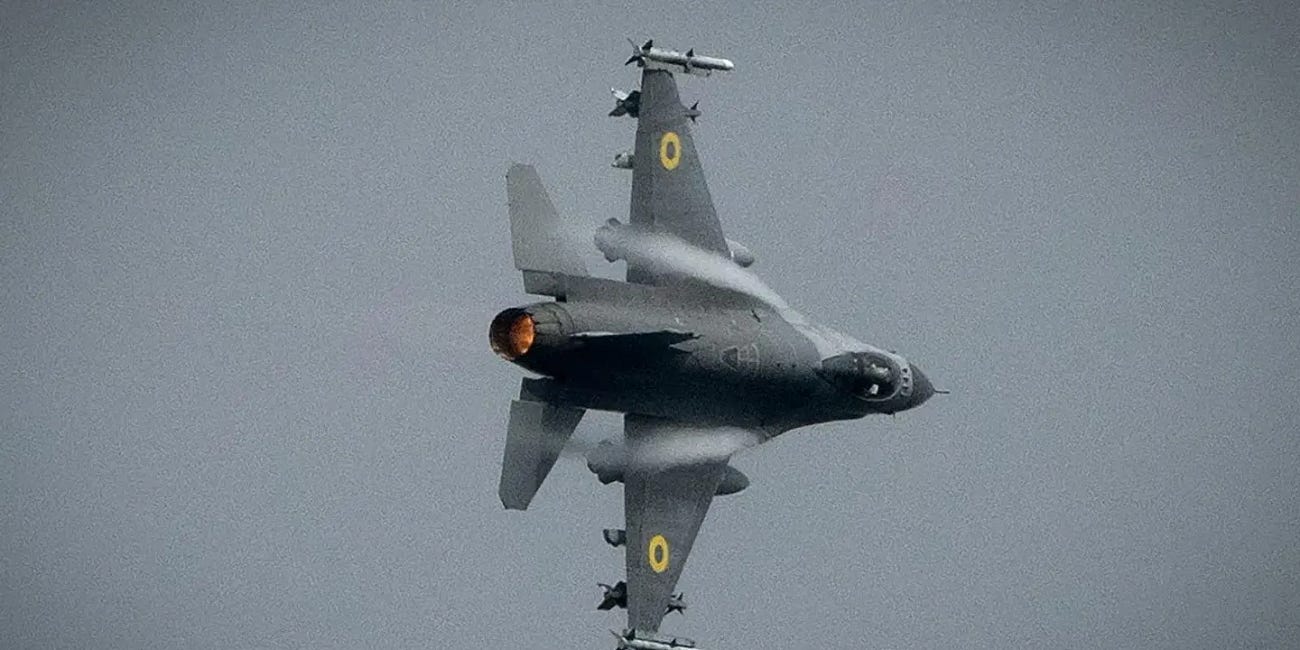Ukraine Is Wasting Its F-16s
Kyiv's risky air-defense methods have cost it four F-16s ... and three pilots
Ukraine lost another Lockheed Martin F-16 fighter on Sunday—its fourth since the first of the supersonic F-16s, donated by a Belgian-Danish-Dutch-Norwegian consortium, arrived in Ukraine in August.
The F-16 crashed as its pilot, 32-year-old 1st Class Pilot Lt. Col. Maksym Ustymenko, chased down Russian drones during a massive air raid on Ukrainian cities Saturday night and Sunday morning.
Ustymenko shot down seven targets. It seems the blast from the last hit also damaged his F-16. “Maksym did everything he could to steer the aircraft away from a populated area,” the Ukrainian air force reported. “He didn’t have time to eject.”
Ukraine has 37 F-16s left. Another 46 should reach Ukraine in the coming years. In addition to flying air-defense sorties, the F-16s lob precision glide-bombs at Russian forces and use their powerful jammers to protect other Ukrainian warplanes.
The air force isn’t about to run out of F-16s, but that doesn’t mean it should squander the nimble, single-engine jets. And yes, it’s a waste for Ukraine to deploy the multi-mission, multi-million-dollar F-16s for point defense against Russian drones.
Most egregiously, it’s a waste of F-16 pilots.
There’s only one truly cost-effective defense against the thousands of 440-pound Shaheds the Russians fling at Ukrainian cities every month: electronic jammers that can block or spoof the satellite signals the explosive Shaheds use to navigate.
The Night Watch electronic warfare team in Kyiv has developed several versions of its Lima jammer—and deployed them to protect certain cities, power substations and sectors of the front line. In zones where Night Watch deployed its best Limas last year, “strikes ceased,” according to team leader “Alchemist.”
By comparison, F-16s are inefficient drone-killers—and counter-drone patrols are unacceptably risky for their highly-trained pilots.
Bloody selfie
Just ask Maj. Vadym Voroshylov. On Oct. 12, 2022, Voroshylov took off in his Mikoyan MiG-29 fighter on a mission to intercept Shaheds. He shot down three drones somewhere over southern Ukraine and then vectored toward two more Shaheds motoring over the southern oblast of Vinnytsia.
Debris from the fifth exploding drone peppered Voroshylov’s MiG and cut into the pilot’s cheek and neck. Blood coated his face and filled his eyes as he pulled the ejection handle.
Incredibly, Voroshylov managed to hold onto his phone and snap a selfie as he descended under his parachute canopy. He later posted the selfie on Instagram. “I will say succinctly,” he wrote in the caption. “No one and nothing can break us!”
The Russians persist in trying, however. “Moscow will not stop as long as it has the capability to launch massive strikes,” Ukrainian Pres. Volodymyr Zelensky warned in the same post where he announced Ustymenko’s death.
“Just this week alone, there have been more than 114 missiles, over 1,270 drones and nearly 1,100 glide bombs,” Zelensky noted. “Pressure on the aggressor is needed, and so is protection. Protection from ballistic and other missiles, from drones and from terror.”
But when it comes to protection from drones, F-16s are poor substitutes for jammers. Three of the four F-16s Ukraine has written off were lost during air-defense patrols amid intensive Russian drone and missile raids.
Including Ustymenko, three Ukrainian F-16 pilots have died. Given that it takes around six months to train a Ukrainian F-16 pilot, and there have been problems finding qualified candidates, it’s possible Kyiv’s air force currently has more F-16s than it has combat-ready pilots for the jets.
Ustymenko’s death only exacerbates that problem.
Read more:
Ukraine Lost Another F-16—Its Third Since August
A Ukrainian air force Lockheed Martin F-16 crashed on Friday morning. It’s the third of the single-engine, single-seat, supersonic jets the Ukrainians have written off since the first of 85 ex-European F-16s arrived in Ukraine in August.







